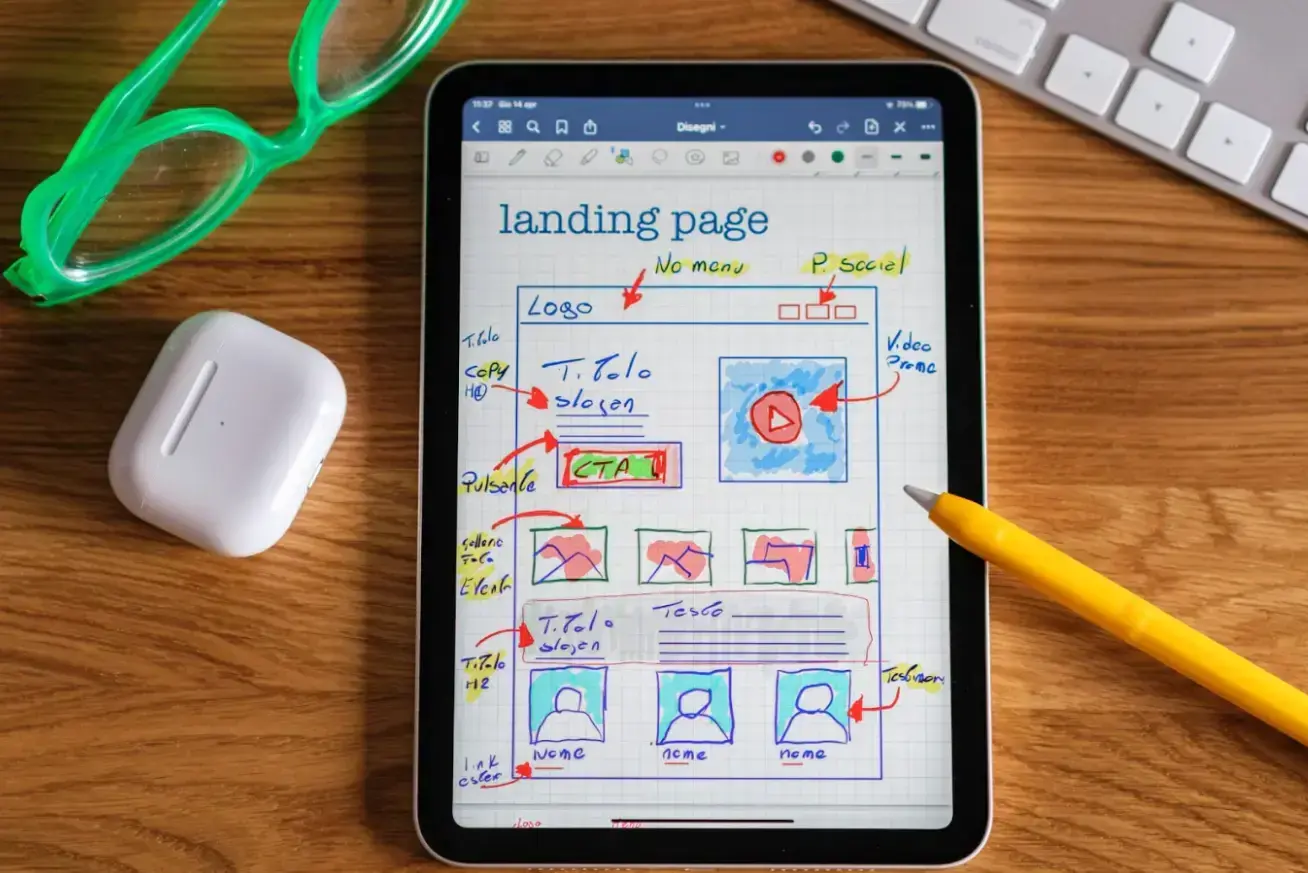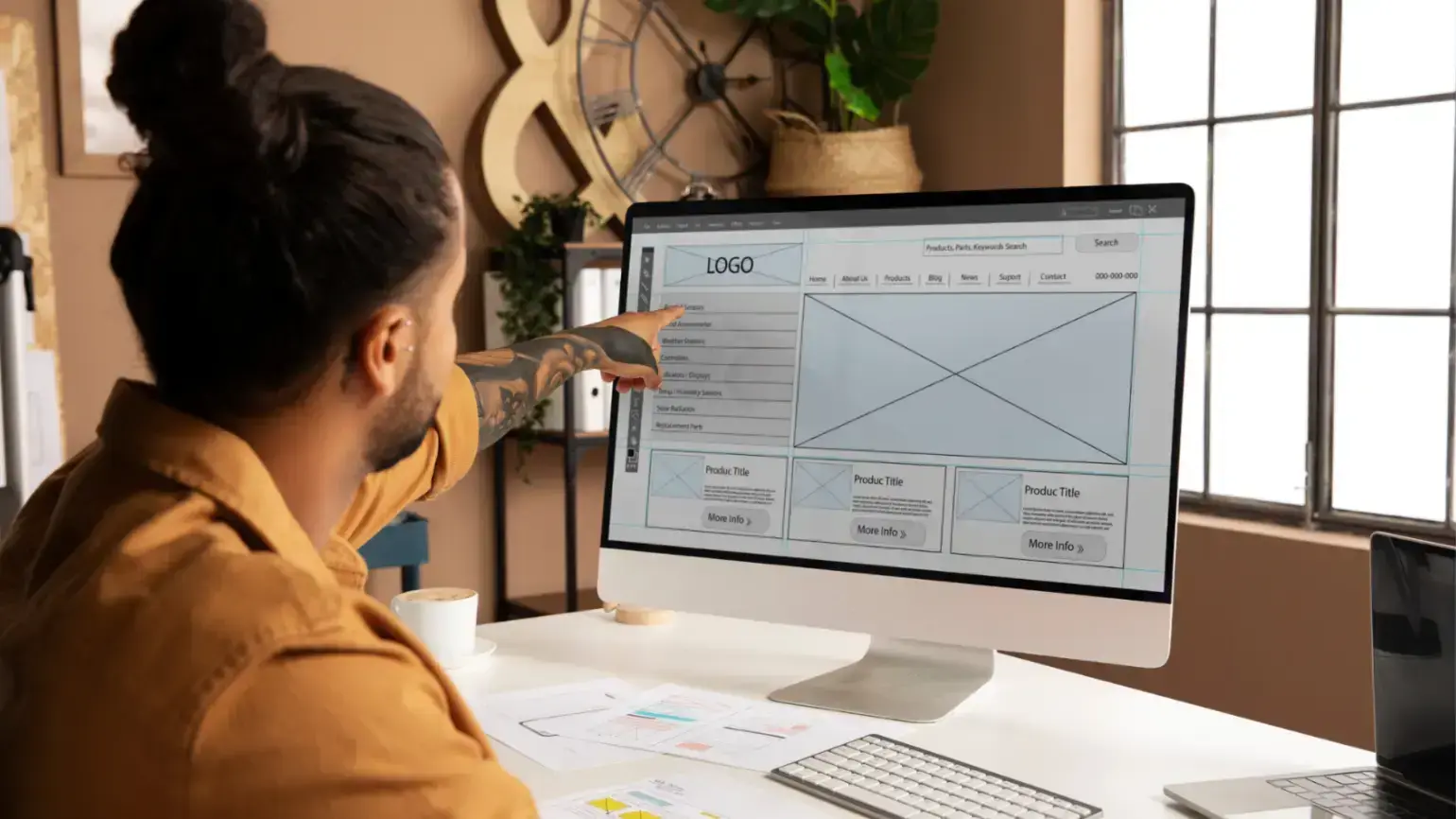Airbnb is more than a heavyweight in the online accommodation space: it is all but synonymous with vacation rentals. What if you wish to carve your own separate niche in this dynamic market and build a website like Airbnb?
To some, it would, no doubt, be an insurmountable task. But in reality, it can be done with the right approach and a dash of ingenuity.
Let's walk through how to create a website like Airbnb, remembering that such an adventure is just as exciting as it is intricate.
In this article:
- Step 1: Laying the Groundwork
- Step 2: Building the Framework
- Step 3: Development and Iteration
- Step 4: Launch and Grow
- How Much Does It Cost to Build a Website Like Airbnb?

Source: Pexels
Step 1: Laying the Groundwork
Before the first line of code is written or the first design mockup is drafted, the foundation of your success lies in thorough planning and a clear vision.
Define your Unique Selling Proposition
Airbnb didn't become a household name by following the herd. They had something new to offer: affordable lodging with a personal touch anywhere in the world.
If you want to build an Airbnb-like website, it's your job to carve out that niche that will make your platform one to head to. Maybe you specialize in luxury villas, eco-lodges, or city apartments with the best views.
Pinpoint exactly what's going to make your site not just 'a choice' but 'the choice' for a specific traveler demographic.
Know your audience inside and out
Understanding who you’re catering to is paramount.
Knowing your audience helps tailor every aspect of your service, from the user interface design to the features you prioritize.
Map the user journey
Imagine the path a user will take through your site—from initial curiosity to final booking.
Your goal is to make this process as intuitive and enjoyable as possible. This journey should be a stroll through a serene park, not a trek through a labyrinth.

Source: Pexels
Step 2: Building the Framework
With a solid plan in place, it’s time to start building. Choosing the right technology and designing an engaging user interface are your next big hurdles.
Choose your tech wisely
The backbone of your site will be its technology stack. Front-end technologies like React and Angular are popular choices for building dynamic, responsive user interfaces.
On the backend, a framework like Django or Ruby on Rails can provide the robustness you need to securely handle user data and transactions. Cloud services like AWS provide scalability for hosting as your user base grows.
Must-have features
To build an app like Airbnb, you need several core features to ensure functionality and user satisfaction:
- User Profiles: Both guests and hosts should be able to create profiles that summarize their interests, past bookings, and reviews.
- Search and Filters: A powerful search engine with customizable filters (price, location, accommodation type) ensures users can find exactly what they’re looking for.
- Booking and Calendar: Integrate a seamless booking system with real-time availability calendars.
- Payments System: Secure payment integrations that support multiple currencies and payment methods are essential.
- Ratings and Reviews: Let users rate their stay and leave reviews to foster trust and community.
Designing for your audience
The design of your site should reflect its personality and appeal directly to your target demographic.
User interface (UI) and user experience (UX) design are about more than aesthetics; they’re about creating a natural and engaging journey. Prioritize your design's clarity, speed, and responsiveness to keep users coming back.
Step 3: Development and Iteration
With designs and plans in hand, it’s time to discuss how to create a website like Airbnb. This stage is all about bringing your vision to life and refining it.

Source: Pexels
Develop with the user in mind
As you develop, keep the end user in constant focus. Implement features with an eye toward how they will be used daily. This isn’t just about building functionality; it’s about crafting experiences.
Rigorous testing
Test early and often. Employ both automated and manual testing to uncover usability, functionality, or security issues.
Testing is not a one-off task but a continuous part of the development process, ensuring the site remains robust and reliable as it evolves.
Step 4: Launch and Grow
With the development and testing phases completed, you’re ready to launch. But launching your website is just the beginning of your journey in the marketplace.
SEO and content marketing
How to make a website like Airbnb successful?
Optimize your site for search engines to ensure it gets found by your target audience. Regularly update your blog, create helpful content, and use keywords strategically to boost your visibility.

Source: Pexels
Social media engagement
Utilize social networks to create a community around your brand by engaging users, sharing stories about your hosts and guests, and featuring unique properties that can be found on your site.
Digital marketing and partnerships
Your digital marketing campaign needs to include email campaigns and PPC advertisements, possibly in collaboration with influencers in travel or on blogs, as well as social media.
These collaborations help drive even more traffic and, at times, establish credibility through association, which broadens the net to capture the interests of potential users within your niche.
Continuous improvement and feedback loops
Once launched, the real work begins: listening diligently to user feedback and monitoring how users use your site through analytics.
Use this data to refine and improve your offerings continuously. Perhaps users need more interactive maps or better communication tools with hosts. Use those insights to evolve and adapt.
How Much Does It Cost to Build a Website Like Airbnb?
Okay, now we are talking about money. It is not enough to know how to build a marketplace like Airbnb.
Let's debunk the financials involved in creating an Airbnb clone.
The investment involved in such websites may vary greatly based on the site's complexity, the technologies applied, and whether you hire freelancers or a development agency. Now, here is an approximate figure to consider:
- Initial Setup and Design: A basic functional site with standard features would cost $10,000 to $50,000, while high-end custom designs and features could raise the cost to $200,000 or more.
- Ongoing Development and Maintenance: It costs between $1,000 and $5,000 per month, depending on new features, updates, and server costs.
- Marketing and Promotion: Initial budgets range from $500 to $5,000 per month, depending on your website's scale and traffic.
Please note that these options are approximate costs.
The precise quote will depend on your personal needs, the scale of the project, and the qualifications and experience of the team you work with.
Wrapping It Up: Your Path to Success
Now you know how to build a website like Airbnb, and you also realize that it’s not as easy as it seems – it’s more like climbing a mountain.
However, the whole process can become an exciting journey if you have the right gear, a good map, and a great team. Here’s what you should consider to succeed:
Stay lean and agile
Start with an MVP: Create a website like Airbnb with very basic but solid features. Then build on it based on user feedback and market demand.
In this way, you avoid heavy upfront investments, which makes you more flexible in adapting to market needs.
Emphasize community and trust
Like with Airbnb, so much of your platform's success will depend upon the trust and community you build. Features that promote user safety, profile verification, secure messaging, and maybe community forums or events go a long way toward fostering this.
Keep innovating
The digital landscape is constantly changing. Stay on point with emerging technology trends and user expectations. Perhaps the future will bring virtual-reality tours of spaces or further integrations with Smart Home technologies.
Enjoy the Journey
Remember that learning how to build a vacation rental website like Airbnb is a process replete with pitfalls and unwarranted possibilities. Never let your passion wane, and don't forget to enjoy the process of building something new and valuable.
Here's to creating a platform that will host not just travelers but unforgettable experiences and connections! Here's to your success in the digital marketplace of 2024, brick by digital brick, or perhaps, click by hopeful click.
FAQ
1. How long does it take to build a website like Airbnb?
It typically takes 6 to 12 months, depending on the features and team size. This includes planning, design, development, testing, and launch.
2. What are the essential features needed for an Airbnb-like website?
Core features include user profiles, search filters, booking systems, payment integration, and a ratings/reviews system for both hosts and guests.
3. What technology stack is recommended for building a scalable accommodation platform?
React or Angular for the front-end, Django or Ruby on Rails for the back-end, and AWS for scalable cloud hosting are commonly used.
4. How much should I budget for marketing my Airbnb-like website?
You can start with $500 to $5,000 per month for SEO, social media, and ads. Adjust the budget as your platform grows.
5. What are the biggest challenges in creating a marketplace like Airbnb?
Key challenges include security, user trust, scalability, and standing out in a competitive market.
6. How can I ensure my Airbnb-like website stands out in the market?
Focus on a niche, build trust through user safety features, and continuously innovate to enhance user experience.

Author Bio
Alisa Serikova is a specialist in web design and web application development, passionate about creating innovative digital solutions. With a strong background in design and technology, she brings a unique perspective to building user-friendly and visually engaging web applications. Alisa holds a degree in Web Development and has contributed to numerous projects that combine creativity with functionality in the digital space.


